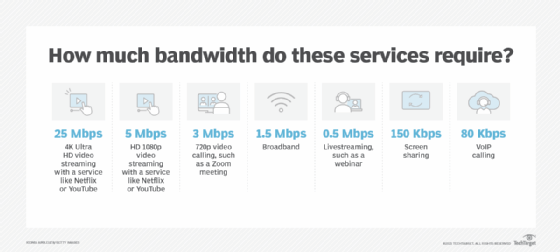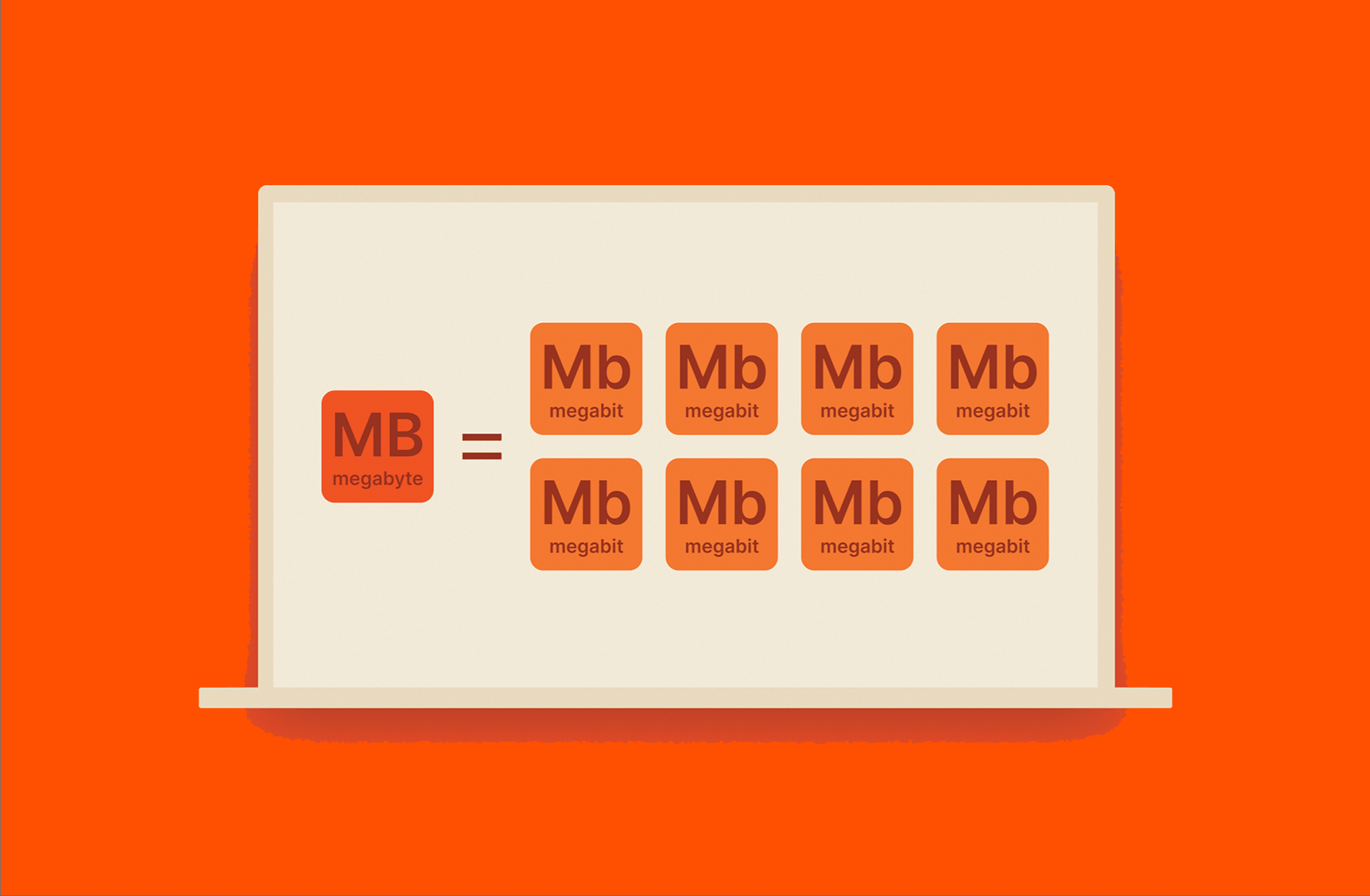Debunking Megabits Per Second: What Consumers Need to Know
Debunking Megabits Per Second: What Consumers Need to Know
Blog Article
How Megabits Per Second Effect Your Online Tasks
The concept of megabits per second (Mbps) plays an essential role in shaping our online experiences. As electronic activities multiply, recognizing the effects of Mbps on streaming, video gaming, and video clip conferencing ends up being significantly crucial. Greater Mbps can enhance performance and minimize disturbances, while insufficient speeds might promote disappointment and inefficiency. Examining your home's specific requirements in regard to these rates is important, particularly as numerous gadgets compete for data transfer. Yet, the nuances of just how Mbps impacts different online tasks warrant additional expedition, especially as our reliance on digital connectivity proceeds to develop.
Recognizing Megabits Per Second
When considering net speed, it's necessary to comprehend the principle of megabits per second (Mbps), which acts as a typical dimension for data transfer prices. This statistics evaluates exactly how much data can be transmitted over a net link in one second, giving a clear understanding of performance abilities - Megabits Per Second. For context, one megabit amounts to one million little bits, and Mbps is frequently made use of to reveal data transfer for various on the internet activities
A greater Mbps shows a much faster internet connection, enabling customers to carry out jobs such as downloading and install documents, surfing sites, and taking part in on the internet video gaming more successfully. For example, regular browsing needs around 1-5 Mbps, while streaming high-definition video might demand 5-25 Mbps. Comprehending these needs is important for identifying the suitable web rate needed for specific activities.
In addition, the number of tools connected to a network can impact total efficiency. Several customers streaming, pc gaming, or downloading at the same time can strain offered bandwidth, causing slower speeds - Megabits Per Second. Assessing personal online behaviors and requirements is crucial in choosing a net strategy that aligns with one's needs, guaranteeing a smooth electronic experience
Streaming and Buffering Issues
Streaming high-definition material has come to be a staple of modern-day online enjoyment, yet it is often accompanied by annoying buffering concerns. These interruptions can significantly diminish the viewing experience, bring about discontentment and possible loss of audience engagement. Buffering occurs when the information sent from the streaming service is not obtained quickly sufficient to maintain a smooth playback, typically as a result of inadequate net speed measured in megabits per second (Mbps)

Additionally, real-time streaming can be impacted by network congestion, which occurs when numerous tools share the exact same bandwidth. Optimizing link speed and guaranteeing ample Mbps is essential for a seamless streaming experience. As streaming services proceed to progress, recognizing the effect of Mbps on buffering concerns stays essential for consumers looking for nonstop entertainment.
Online Pc Gaming Performance
The impact of web speed on online activities expands past streaming, dramatically influencing on the internet pc gaming performance. In competitive gaming, reduced latency and high data transfer are essential for a seamless experience. A fast connection reduces lag, enabling gamers to react promptly to in-game events, which can be the difference in between success and loss.
Bandwidth, measured in megabits per second (Mbps), plays a vital duty in supporting several gadgets and gaming systems concurrently. Insufficient bandwidth can result in went down links or look these up reduced game high quality, negatively affecting gameplay. For instance, on-line multiplayer games require significant information transfer, especially throughout peak video gaming hours when many players are online.
Hectic first-person shooters require greater rates to maintain responsiveness, while turn-based technique video games may work reasonably well on lower rates. As online gaming continues to advance, with boosting graphical fidelity and more complex multiplayer environments, the need for higher Mbps will only escalate.
Video Clip Conferencing Quality
In today's electronic landscape, video conferencing high quality is heavily affected by net rate, especially in regards to transmission capacity and latency. High-grade video calls call for adequate transmission capacity to transfer sound and video data seamlessly. Usually, a minimum of 1.5 Mbps upload and download speeds is suggested for conventional meaning video, while high-def video conferencing usually demands at the very least 3 Mbps.
Latency, or the hold-up between sending and receiving information, additionally plays a crucial role in the individual experience. Reduced latency ensures that discussions circulation naturally without unpleasant pauses or disturbances. Preferably, latency must be below 150 nanoseconds for effective communication. Greater latency can cause echo, lag, and disjointed interactions, which can hinder collaboration and involvement throughout meetings.
In addition, several participants in a video seminar can strain available data transfer, requiring even greater rates. Network congestion, usually triggered by simultaneous activities like streaming or downloading, can further break down video clip quality. Therefore, for organizations relying upon video conferencing for remote collaboration, comprehending the partnership between megabits per general and second communication quality is vital for preserving performance and enhancing digital interactions.
Choosing the Right Web Plan
Picking a news proper internet strategy is essential for guaranteeing optimal efficiency in different on the internet tasks, especially in setups that demand high transmission capacity, such as video clip conferencing and online gaming. Megabits Per Second. When taking into consideration a web strategy, it is necessary to evaluate both the rate and data allowance to match your certain usage needs
For households with several customers taking part in synchronised activities, a strategy offering higher megabits per second (Mbps) is recommended. Typically, a minimum of 25 Mbps appropriates for basic streaming and browsing, while plans exceeding 100 Mbps are better for more intensive jobs. Additionally, consider the nature of your online activities; video conferencing calls for at the very least 1.5 Mbps upload speed, while online gaming might require a lower latency yet constant link.
Endless information strategies can protect against strangling and disruptions, specifically if heavy usage is anticipated. By thoughtfully selecting an internet plan tailored to your needs, go to my site you can enhance your on-line experience, making certain smooth, nonstop accessibility to your preferred activities.
Conclusion
In verdict, the importance of megabits per second (Mbps) in shaping on the internet tasks can not be overemphasized. A thorough understanding of individual or family Mbps requirements is necessary for selecting a suitable net strategy that sufficiently supports diverse online activities and individual demands.

Commonly, a minimum of 25 Mbps is ideal for conventional streaming and surfing, while strategies exceeding 100 Mbps are preferable for more extensive tasks. In addition, think about the nature of your online activities; video conferencing calls for at least 1.5 Mbps post speed, while on the internet gaming may require a lower latency yet regular connection.
Report this page